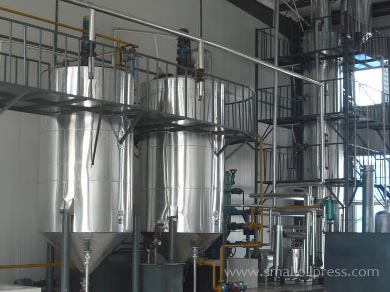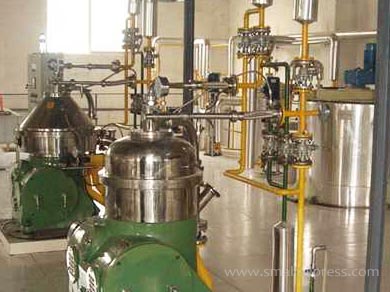Edible oil refining process for oil mill
Edible oils are a staple in every household and are used for cooking and various industrial purposes. However, the oil obtained by pressing or extracting methods without refining is called crude oil. Crude oil contains various impurities that need to be removed to meet the required food or industrial standards. This process of removing impurities is called oil refining.
Oil refining is an essential process that ensures the quality and safety of edible oils. The refining process involves removing impurities from crude oil to improve its color, flavor, and stability. The process also eliminates harmful compounds, such as free fatty acids, phospholipids, and pigments.


Edible Oil Refining Process: A Comprehensive Guide
There are several methods of oil refining, but the most commonly used process is the “five de” continuous oil refining process. This process involves five steps: hydration degumming, alkali refining and deacidification, adsorption decolorizing, winterization dewaxing, and high-temperature deodorization.
1, Degumming
Degumming is the first step in the oil refining process. It involves removing the gum and other impurities from the crude oil. The impurities in the oil are mainly phospholipids, proteins, and carbohydrates. These impurities can cause discoloration, odor, and instability in the oil. The degumming process involves adding water to the crude oil and then separating the gum from the oil using centrifugation.
2, Deacidification
Deacidification is the second step in the oil refining process. It involves removing the free fatty acids from the crude oil. Free fatty acids can cause rancidity and off-flavors in the oil. The deacidification process involves adding an alkaline solution to the crude oil to neutralize the free fatty acids. The resulting soapstock is then separated from the oil using centrifugation.
3, Decolorization
Decolorization is the third step in the oil refining process. It involves removing the pigments and other impurities that cause discoloration in the oil. The decolorization process involves adding an adsorbent material, such as activated carbon or bleaching earth, to the oil. The adsorbent material absorbs the impurities and is then removed from the oil using filtration.
4, Dewaxing
Dewaxing is the fourth step in the oil refining process. It involves removing the waxes from the crude oil. Waxes can cause cloudiness and instability in the oil. The dewaxing process involves cooling the oil to a low temperature and then filtering it to remove the waxes.
5, Deodorization
Deodorization is the final step in the oil refining process. It involves removing the odor and flavor compounds from the oil. The deodorization process involves heating the oil to a high temperature under vacuum. The volatile compounds are then removed from the oil using steam distillation.
At Huanyang, we offer customized oil refining solutions for different types of vegetable oils. Our team of experienced engineers can design the most suitable oil refining process for your specific needs. We use advanced technology and equipment to ensure that the final refined oil meets your national standards.

